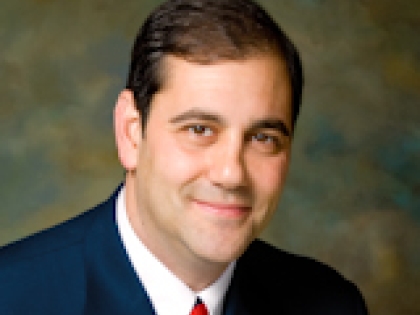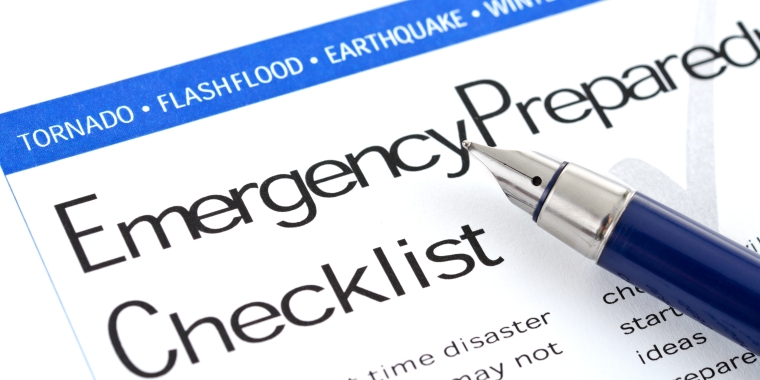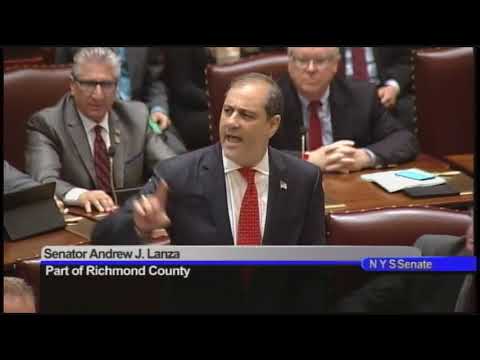
NYC Emergency Management Hosts Mobile Office Hours To Mark the Beginning of the 2019 Atlantic Hurricane Season
June 3, 2019

“Staten Islanders know all too well that an emergency can strike at any time. With the 2019 hurricane season upon us, now is a good time for families to put an emergency preparedness plan in place,” New York State Senator Andrew Lanza said. “I applaud Commissioner Esposito and NYC Emergency Management for coming to Midland Beach to promote the importance of preparedness.”
May 31, 2019 — To mark the beginning of the 2019 Atlantic hurricane season, in partnership with FEMA Region II and Staten Island elected officials, the New York City Emergency Management Department today kicked off its Mobile Office Hours to remind New Yorkers to plan for the hurricane season. The department’s Mobile Office Hours are an annual outreach initiative that engages the public by bringing emergency preparedness to their communities. New York City Emergency Management also launched the Know Your Zone hurricane awareness campaign to encourage New Yorkers to find out whether they live in one of the city’s six hurricane evacuation zones. Atlantic hurricane season runs from June 1 through November 30.
“During Atlantic hurricane season it is important to remember that it only takes one storm. The first step to preparing you and your family is to understand where you live,” NYC Emergency Management Commissioner Joseph Esposito said. “Check out the Know Your Zone Finder to find out if you are one of the three million New Yorkers living in a hurricane evacuation zone.”
“We need to change the way we think about disasters and emergencies, making preparedness actions part of our daily routine,” FEMA Region II Regional Administrator Thomas Von Essen said. “Now is the time for everyone to know and prepare for emergencies that could affect them where they live, work, go to school, worship, and visit.”
“This week we’re seeing yet again how quickly severe weather can wreak havoc on our communities. Whether it is a hurricane, a full-fledged Superstorm, or just a sudden severe thunderstorm, mitigation projects like the seawall go a long way toward keeping us safe, but there’s no substitute for staying informed and having a plan,” United States Congress Member Max Rose said. “I want to thank New York City Emergency Management for providing the resources and information we all need to stay prepared.”
“I am grateful to partner with New York City Emergency Management to bring this emergency preparedness event to Staten Island,” Staten Island Borough President James Oddo said. “I hope our residents take advantage of this event, as we all should have our plans prepared in the case of another serious storm.”
The National Oceanic and Atmospheric Administration (NOAA) has issued its 2019 Atlantic hurricane season outlook with forecasters predicting a near-normal season. NOAA’s forecasters predict a likely range of nine to 15 named storms (winds of 39 mph or higher), of which four to eight could become hurricanes (winds of 74 mph or higher), including two to four major hurricanes (category 3, 4, or 5; with winds of 111 mph or higher). NOAA provides these ranges with a 70 percent confidence. An average season produces 12 named storms, of which six become hurricanes, including three major hurricanes.
“Staten Islanders know all too well that an emergency can strike at any time. With the 2019 hurricane season upon us, now is a good time for families to put an emergency preparedness plan in place,” New York State Senator Andrew Lanza said. “I applaud Commissioner Esposito and NYC Emergency Management for coming to Midland Beach to promote the importance of preparedness.”
“This community knows all too well the devastation a hurricane can cause and while we can’t control Mother Nature, we can take the necessary steps to make sure families are protected and have a plan for any scenario,” New York State Assembly Member Nicole Malliotakis said. “From learning FEMA’s evacuation guidelines, to obtaining an adequate supply of prescription medications to last through the storm period, we can never be too cautious when preparing for an emergency situation.”
To help raise awareness of hurricane season Know Your Zone advertisements will be displayed on bus shelters and Link NYC kiosks throughout the five boroughs beginning in June. Ads will also run in newspapers in 16 languages throughout the city this June, July and August. Through the Know Your Zone campaign, NYC Emergency Management aims to reach the roughly three million New Yorkers living within the city’s hurricane evacuation zones, which were revised in 2013. Hurricane evacuation zones are based on coastal flood risk resulting from storm surge (the “dome” of ocean water that is pushed ashore by the winds and low barometric pressure of a hurricane), the geography of the city’s low-lying neighborhoods, and the accessibility of these neighborhoods by bridges and roads. The City may order residents who live in a zone to evacuate depending on a hurricane’s forecast strength, track, and storm surge. If the City orders an evacuation of your zone, do so as directed. For more information about hurricane preparedness, visit NYC.gov/knowyourzone.
“Many Staten Islanders learned the hard way how important it is to know what to do and where to go in a natural disaster or other emergency. I’m glad we’re able to bring resources to our community to help our friends and neighbors learn the best ways to manage during these types of events and to mitigate harm to their families and homes,” New York City Council Member Joseph Borelli said. “I hope many of you will be joining Commissioner Esposito and I on Friday for this educational opportunity; bring the kids and you can try to win some cool prizes, too!”
“After Sandy, residents of the East Shore are acutely aware of the extreme dangers of coastal flooding and storm surges. This event to kick-off hurricane season is a good time to reinforce those lessons we learned,” NYC Council Member Steven Matteo said. “It is also a good time for residents to make sure they know whether they live in a hurricane evacuation zone, ensure they have an emergency plan and the proper supplies, and are signed up for mobile alerts to notify them when a storm is coming. I encourage residents to come to Midland Beach on May 31st to meet with city agencies and get all of their questions answered.”
PREPARE AN EMERGENCY PLAN:
Develop a plan with your household members that outlines what to do during an emergency, including a coastal storm. Use Ready New York: My Emergency Plan at NYC.gov/EmergencyManagement. NYC Emergency Management has updated the Ready New York: My Emergency Plan workbook to include the city’s hurricane evacuation zones map. The new feature includes information about the city’s hurricane evacuation centers and the six hurricane evacuation zones. It is available in 13 languages and audio format. For more information, visit NYC.gov/KnowYourZone.
· If you have a disability, access and functional need, make sure your plan addresses how your needs may affect your ability to evacuate, shelter in place, or communicate with emergency workers. Arrange help from family, friends, or service providers if you will need assistance.
· Know your zone. Areas of the city subject to storm surge flooding are divided into six evacuation zones (1 through 6) based on risk of storm surge flooding. Use the Hurricane Evacuation Zone Finder or call 311, (212-639-9675) for Video Relay Service, or TTY (212-504-4115) to find out if your address is located in an evacuation zone.
· Prepare a Go Bag that you can grab in case you need to leave your home in a hurry. For more information about what to pack in a Go Bag, visit http://www1.nyc.gov/site/em/ready/gather-supplies.page.
· Stay informed by signing up for Notify NYC to receive emergency notifications. New Yorkers are encouraged to sign up for Notify NYC, the City’s free emergency communications program, for the latest information and updates on this storm and emergency events in NYC. To sign up for Notify NYC, download the free mobile application, visit NYC.gov/NotifyNYC, call 311, or follow @NotifyNYC on Twitter.
PREPARE FOR FLOODING
If you live in a flood-susceptible area:
· Keep sandbags, plywood, plastic sheeting, and lumber, on hand to help protect your home.
· Make an itemized list of personal property, including furnishings, clothing, and valuables.
· Move valuable items from basements to upper floors. (Basements are vulnerable to flooding.)
· Know your flood risk. To learn more about coastal flood risk in New York City, visit the FEMA Region II Coastal Analysis and Mapping website for flood hazard information at http://www.region2coastal.com/.
· Consider getting flood insurance. Protection against loss due to floods is not covered under a homeowner's policy. Contact your property/casualty agent or broker about eligibility for flood insurance. For more information, visit the National Flood Insurance Program online at www.floodsmart.gov.
PREPARE FOR POWER OUTAGES
· Build or restock your emergency supply kit, including a flashlight, batteries, cash, and first aid supplies.
· Charge cell phones and any battery-powered devices.
· Turn your refrigerator and freezer to a colder setting. If you lose power, items that need refrigeration will stay cooler for longer.
· Check on friends, relatives, and neighbors, especially older adults and people with disabilities, access and functional needs, or health conditions. Help them to prepare if needed.
For more safety tips, visit NYC.gov/EmergencyManagement. New Yorkers are also encouraged to download the Notify NYC mobile application, which is available for free download from iTunes or Google Play. Notify NYC is the City’s free emergency notification system. Through Notify NYC, New Yorkers can also receive phone calls, text messages, and/or email alerts about weather conditions and other emergencies. To learn more about the Notify NYC program or to sign up, visit NYC.gov/NotifyNYC or call 311. You can also follow @NotifyNYC on Twitter.
Share this Article or Press Release
Newsroom
Go to Newsroom5/31/2018 Senate Floor Comments
May 31, 2018



